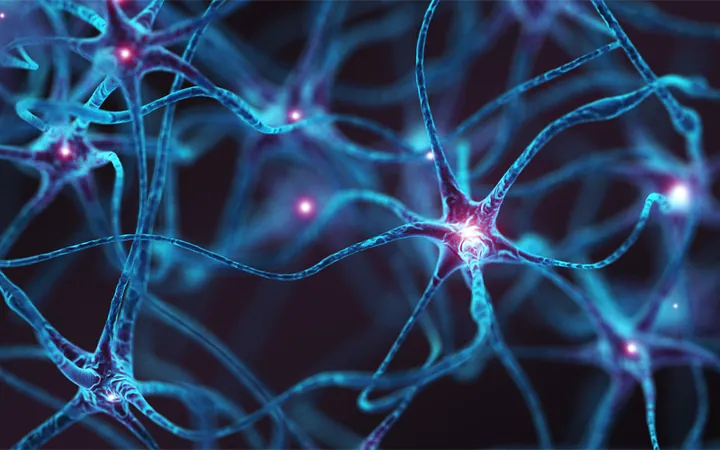
Groundbreaking Research Unveils Promising Pathways for Neurodegenerative and Cancer Treatments
2024-12-27
Author: Arjun
Breaking News: Groundbreaking Research Unveils Promising Pathways for Neurodegenerative and Cancer Treatments!
In recent publications within the Journal of Biological Chemistry, researchers have made significant strides in understanding the complex interactions of proteins implicated in Huntington's disease and cancer growth, revealing novel insights that could pave the way for therapeutic advancements.
Neurodegenerative Disease and Protein Interactions
A team of scientists at the University of Southern California has shed light on the interactions between the Huntington protein and TDP43, a protein associated with severe neurodegenerative disorders. Huntington's disease results from a mutation in the huntingtin protein (Httex1), leading to harmful aggregations that disrupt brain function. These findings spotlight the intricate relationship between Httex1 and TDP43 in their aggregated forms, emphasizing why these proteins colocalize and the implications for neurodegeneration.
Utilizing advanced biophysical and biochemical techniques, the scientists discovered that Httex1 and TDP43 directly interact through a conformation-dependent mechanism. They found that while the presence of Httex1 fibrils speeds up the conversion of TDP43 into a solid state, it simultaneously slows the aggregation of Httex1. This unique interaction could serve as a critical target for developing new treatment strategies aimed at inhibiting protein aggregation in neurodegenerative diseases. Future research will explore additional interactions and possible therapeutic compounds that could mitigate these neurodegenerative processes.
Harnessing Bacterial Microcompartments for Industrial Applications
Another exciting study from the University of California, Berkeley, focused on carboxysomes—bacterial microcompartments essential for carbon fixation. Researchers investigated a protein, CsoS2, characterized by intrinsically disordered elements that play critical roles in cellular processes. Their findings reveal that specific regions of CsoS2 are vital for interactions with shell proteins, promoting the assembly of these microcompartments.
This research not only enhances our understanding of basic cellular functions but also opens avenues for engineering these biological systems to benefit industries focused on sustainable energy and chemical production. Understanding carboxysome assembly could lead to novel applications in bioengineering, such as the production of biofuels.
Curbing Cancer Growth: A New Player Emerges
In cancer research, scientists at Sorbonne Université have defined the role of a previously unknown protein—CYYR1—in regulating WWP1, an E3 ubiquitin ligase linked to cancer progression. Elevated WWP1 levels are associated with poor prognoses in various cancers, making it a prime target for therapeutic intervention.
Through innovative experiments, the researchers elucidated how CYYR1 binds to WWP1 and induces its autoubiquitination, leading to WWP1 degradation and a reduction in breast cancer cell proliferation. These results mark a significant step toward understanding the implications of CYYR1 in tumor suppression and open the door for further studies aimed at utilizing this interaction for innovative cancer therapies.
Conclusion: Hope on the Horizon
These groundbreaking studies highlight the critical relationship between protein interactions in both neurodegenerative diseases and cancer. As scientists continue to unravel the complexities of these proteins, the potential for developing targeted therapies grows, bringing hope to millions affected by these devastating conditions. Stay tuned for more updates as this research unfolds, offering a beacon of optimism in the quest for understanding and treating these challenging diseases!
 Brasil (PT)
Brasil (PT)
 Canada (EN)
Canada (EN)
 Chile (ES)
Chile (ES)
 Česko (CS)
Česko (CS)
 대한민국 (KO)
대한민국 (KO)
 España (ES)
España (ES)
 France (FR)
France (FR)
 Hong Kong (EN)
Hong Kong (EN)
 Italia (IT)
Italia (IT)
 日本 (JA)
日本 (JA)
 Magyarország (HU)
Magyarország (HU)
 Norge (NO)
Norge (NO)
 Polska (PL)
Polska (PL)
 Schweiz (DE)
Schweiz (DE)
 Singapore (EN)
Singapore (EN)
 Sverige (SV)
Sverige (SV)
 Suomi (FI)
Suomi (FI)
 Türkiye (TR)
Türkiye (TR)
 الإمارات العربية المتحدة (AR)
الإمارات العربية المتحدة (AR)